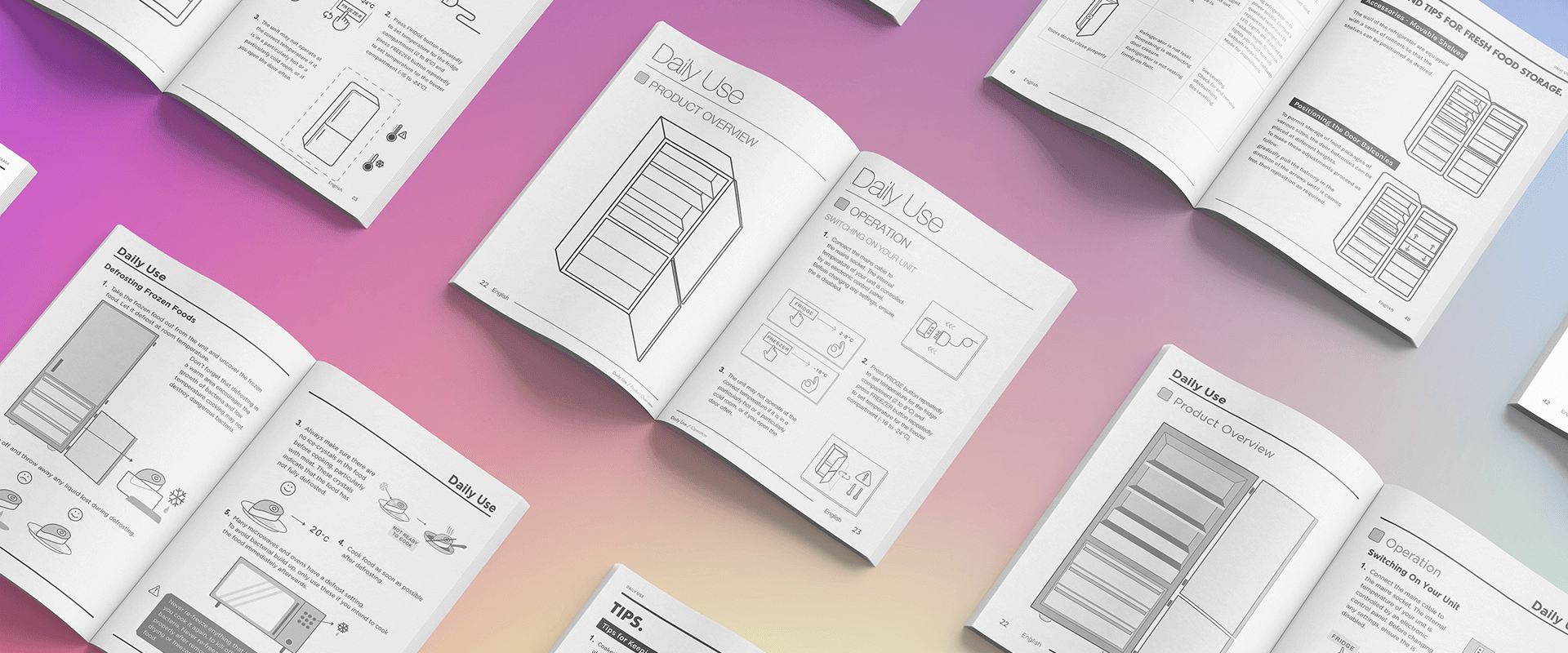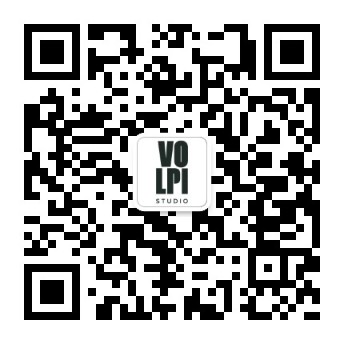How Studio Volpi helps companies turn User Manuals into strategic, effective marketing and customer experience tools, by automating and digitalising the compilation process.
Producing and updating user manuals and other technical documentation is a tedious task that companies tend to overlook, yet the entire process can be rationalised and made easier in order to deliver a positive experience for both customers and brands.
Studio Volpi has developed a methodology for the digitalisation of such important tools, thanks to its unique combination of communication, branding and engineering competencies.
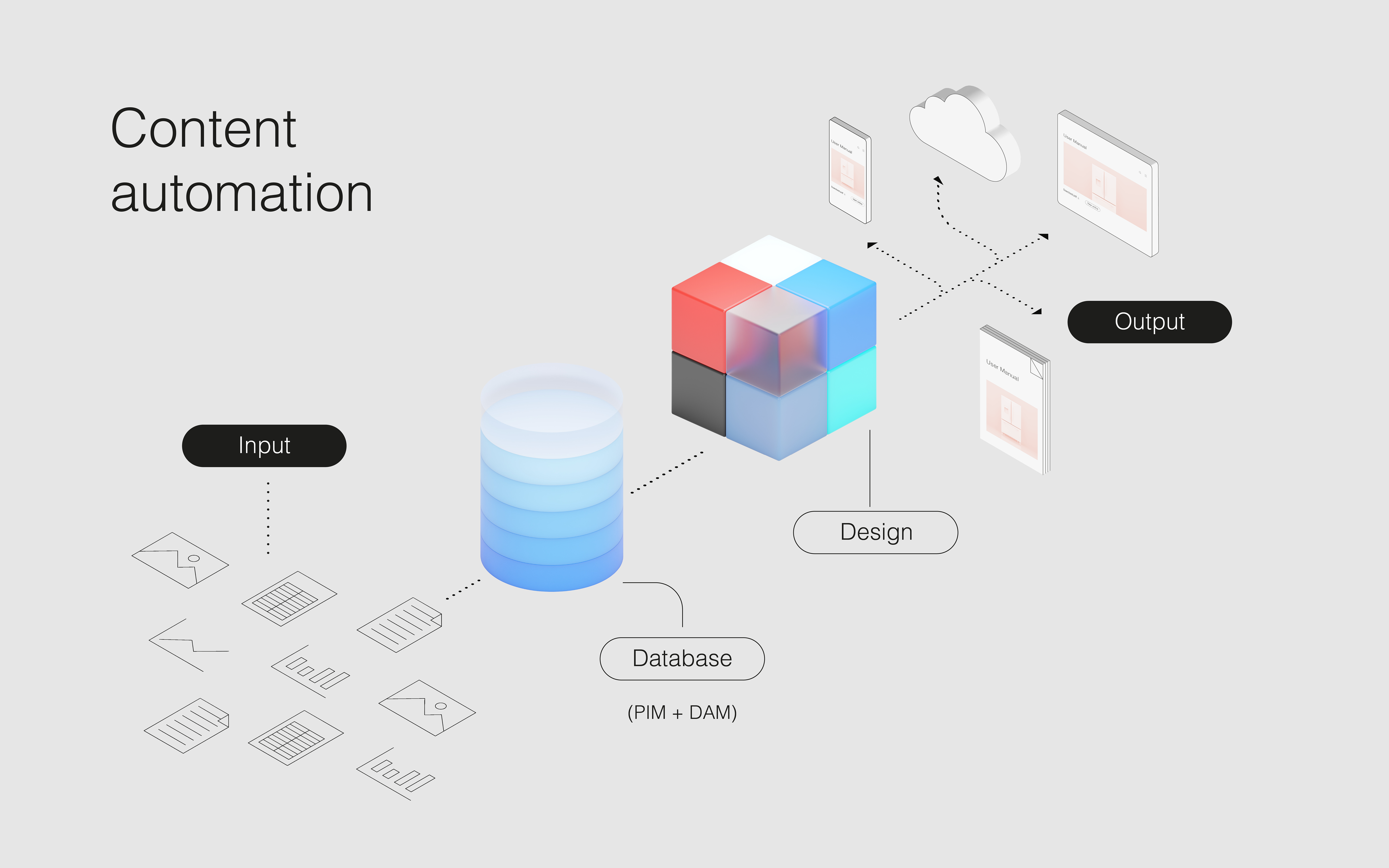
From technical maze to content architecture
The Studio’s approach to the automation of technical literature starts with a deep and comprehensive analysis of all the technology elements involved. This can extend over different brands belonging to the same company, sharing common technical features, as well as different product platforms and language clusters. A daunting task that, in many cases, is facilitated by the fact that it was the Studio itself who designed, in the first place, the technologies in question and the products’ user interfaces.
This last consideration is very important since to compile user manuals, companies generally rely entirely on their own technology people, who do their best but are not professional communicators. On the other hand, for an external communication agency to acquire the necessary technical knowledge and expertise to even start to understand the technicalities of a single product often translates into an unnecessary long and costly exercise, with uncertain results in terms of technical accuracy. Studio Volpi offers the best of both worlds, leveraging its advanced technological expertise to produce the most effective, professional looking and technically accurate communication.

Starting with the client company brands’ existing literature, Studio Volpi aligns all newly created inputs. The Studio also conducts workshops with different company teams - branding, innovation, UX/UI - to explore important aspects of ergonomics and user interaction.
From that primordial “technical quark soup” the Studio then creates an archive consolidating all the single relevant elements that, combined as and when necessary, will constitute the contents of all required literature. A process defined as “content architecture”, and that can easily be automated, repeated and applied, time after time, to a variety of output formats. The latter can be developed independently, from a graphic layout point of view, with all relevant “fields” being automatically fed in from the archive: pictures, icons, text, tech specs.
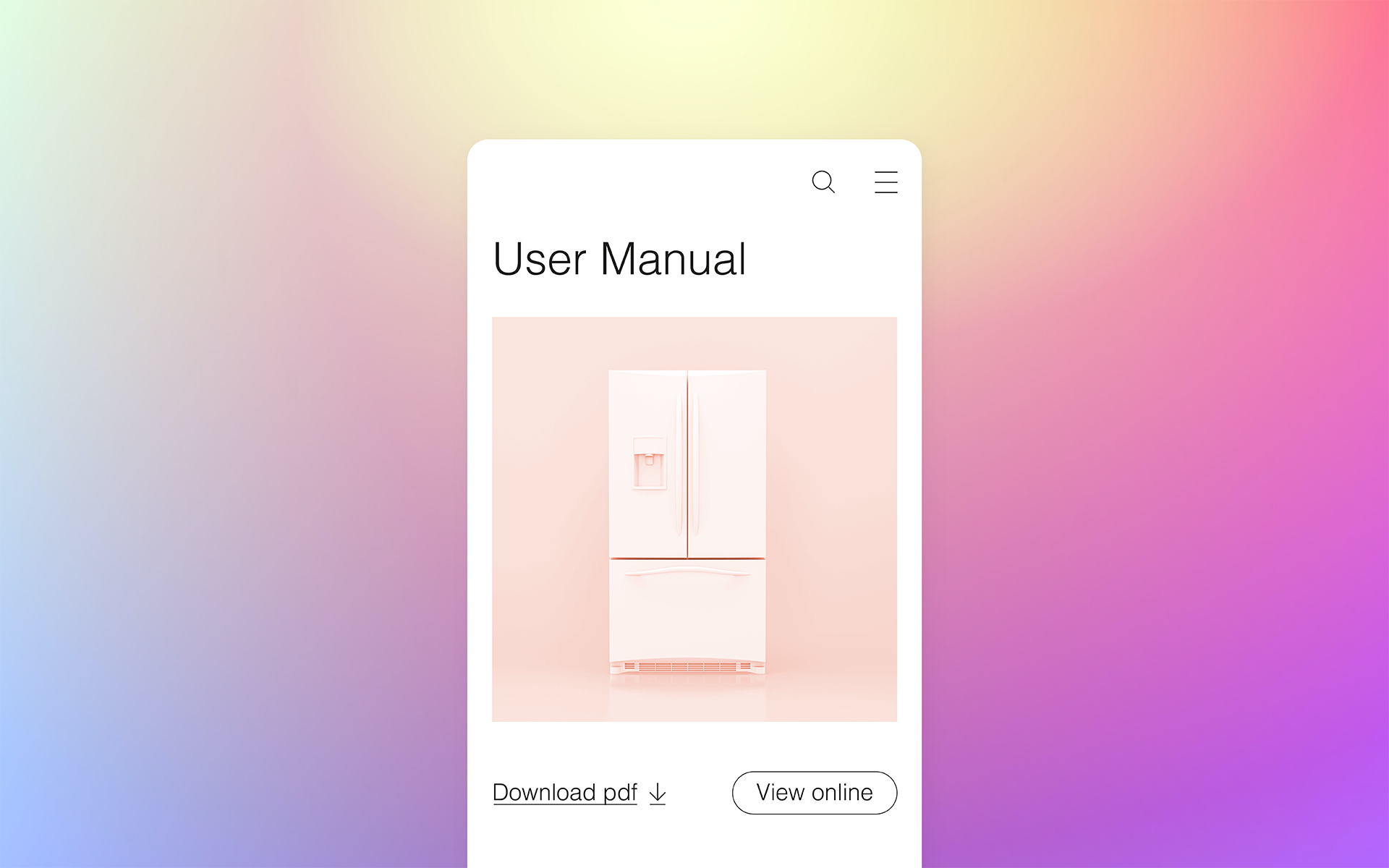
Advantages of automating content creation
In doing so, Studio Volpi utilises a specialised software developed by Adobe precisely to produce manuals from technical data. Such an approach has many advantages, starting with the increased control over the various output formats and their content. Another advantage, brought by having a single source of input for all literature, is the complete avoidance of inconsistencies and of the spreading of errors. Content is always synced on every media connected to the archive. Moreover, this methodology provides almost endless flexibility in adding or modifying content and output media, from manuals to catalogues, to brochures, websites, apps or simple price lists. Also, different users can access the same shared platform to add or modify input according to their assigned areas of expertise. Finally, such a tool can bring significant costs and time savings, thanks to its scalability and especially by greatly reducing editing time since there is no need to re-create graphic layouts from scratch every time one of the variables needs modifying.
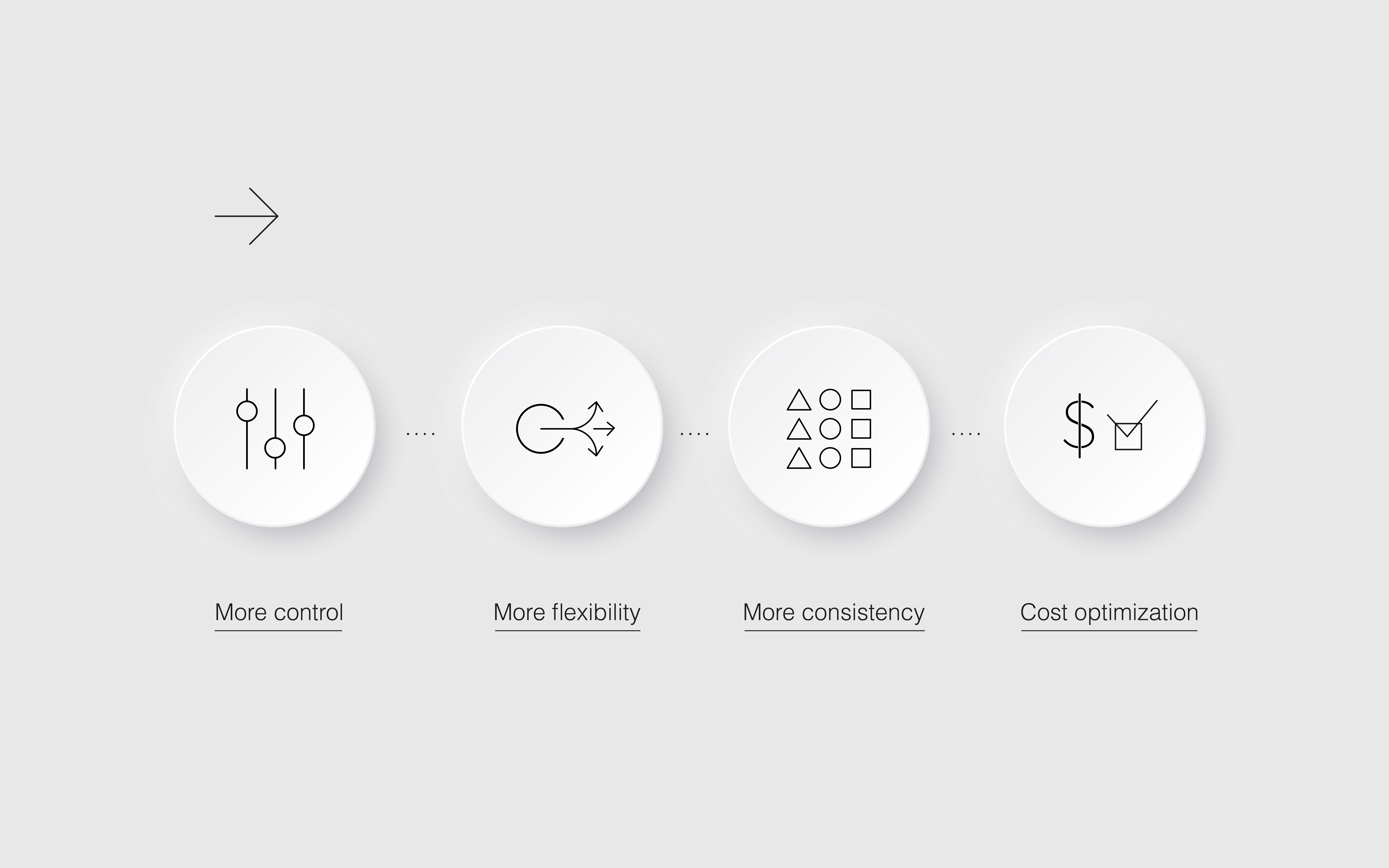
9-step process catches it all
From initial review to the actual creation of files, Studio Volpi follows a 9-step process:
- Technical requirements alignment with client’s IT department
- System setup and installation
- Definition of output variables
- Development and finalisation of Master Content and graphic layout
- Contents translations (if needed)
- Creation of text and imagery archive
- Master pages setup
- Contents linking with automation plug-in
- File generation
This process ensures the rationalisation of the entire automated content creation, allowing clients to start using their new custom-built system immediately.
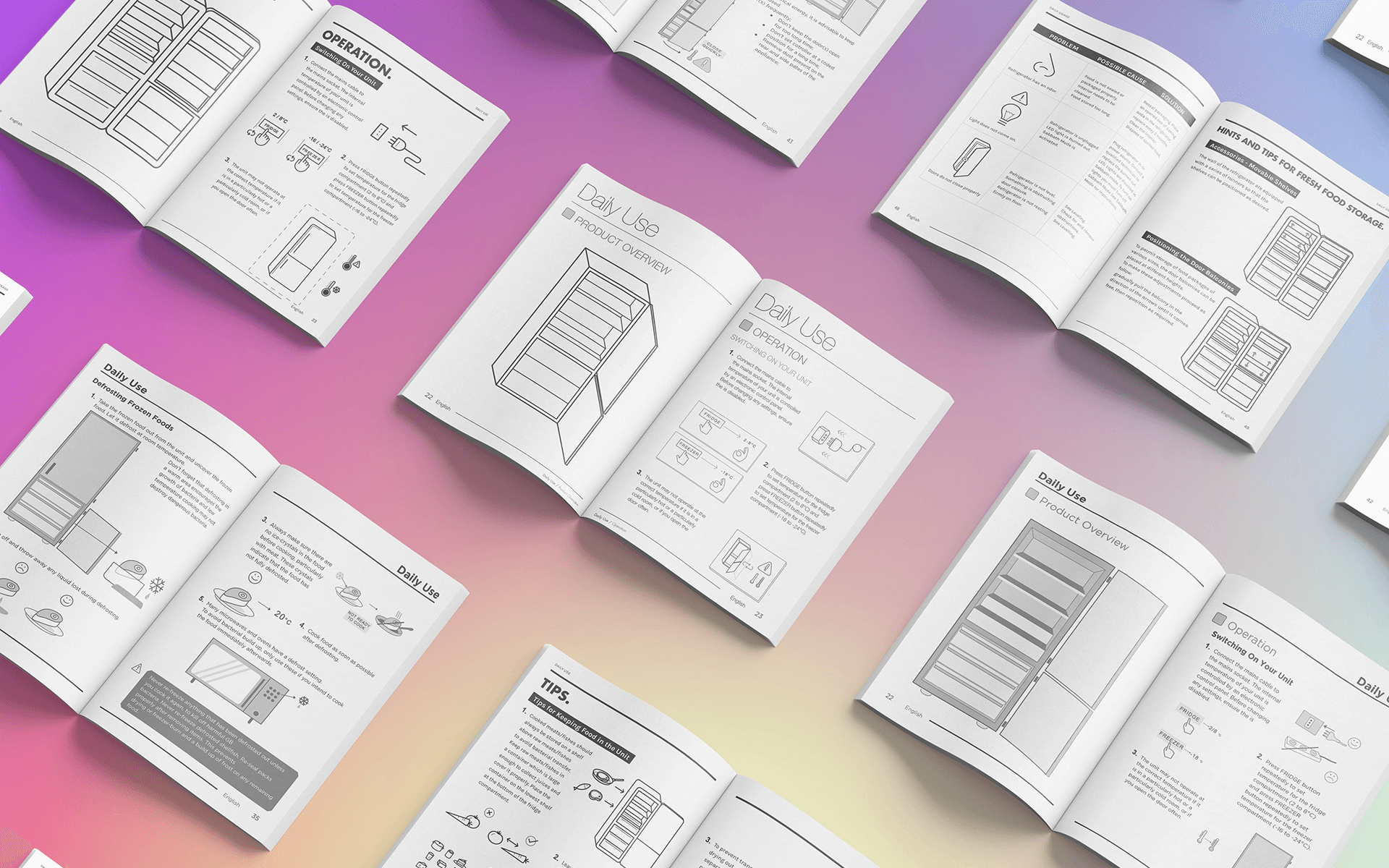
Expanding the automation horizon
There are virtually no limits to the possible applications of this concept. Companies will always need to communicate the technical aspects of their products to the most diverse audiences, across the most diverse platforms and in the most effective way. It is not a matter of “if” a company will adopt automated content processes, but rather of “when” it will start implementing it. The sooner the better, as the huge marketing potential of a significant chunk of companies’ literature, constituted by manuals, quick guides, reference documents and the likes, lies unexploited in their customers’ drawers, and making technical complexity simple and attractive is definitely the way forward.
-
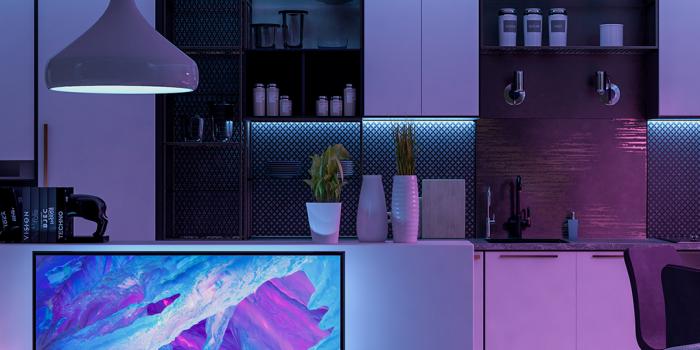
-
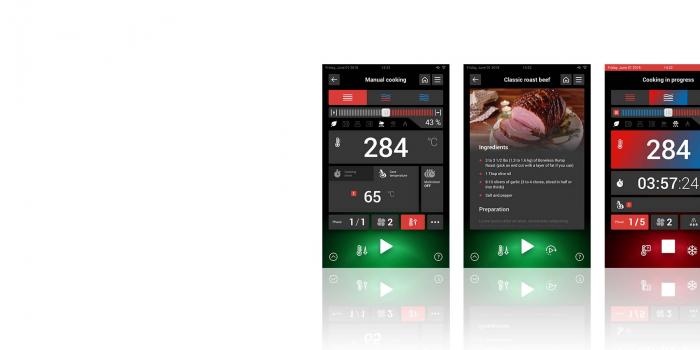
-

Prospettive Mar 30, 2020
KITCHEN 4.0: HOW DIGITALIZATION IS CHANGING THE RULES
Technological updating and the integration of an interconnected soul are turning modern professional kitchens into a perfect example of the 4.0 industry, where the product and its super digital powers become a tool to improve working conditions, enhance productivity, monitor the processes to achieve better results and create new business models


